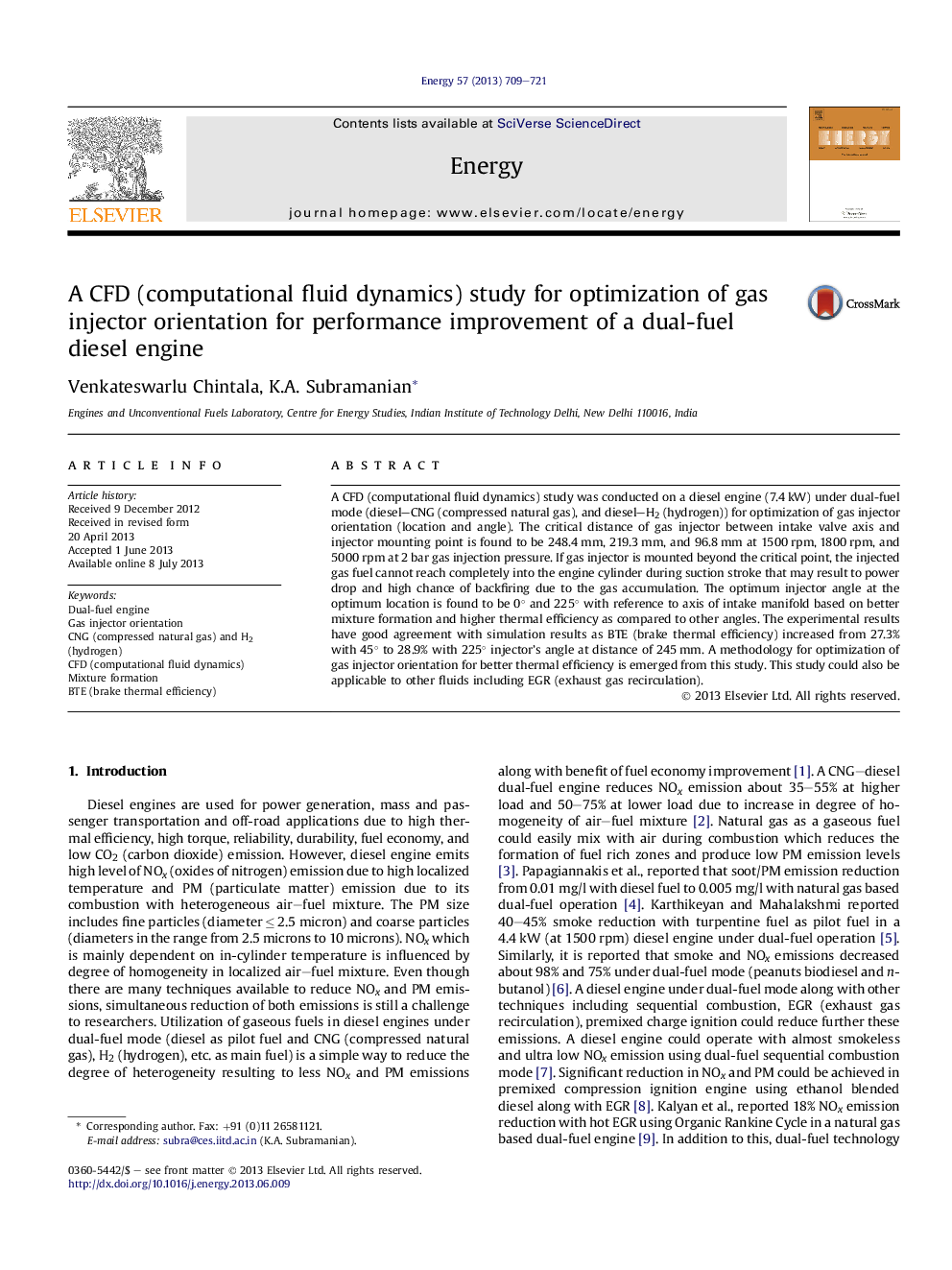| Article ID | Journal | Published Year | Pages | File Type |
|---|---|---|---|---|
| 1733114 | Energy | 2013 | 13 Pages |
•CFD (computational fluid dynamics) study was conducted for optimization of gas injector orientation for high thermal efficiency.•Gas injector critical distance decreases with increase engine speed and gas injection pressure.•The distance of injector mounting on manifold influences fuel trapping efficiency and power drop.•Mixing rate of gas with air increases with increase gas injection pressure.•Thermal efficiency increased from 27.3% with 45° to 28.9% with 225° injector angle.
A CFD (computational fluid dynamics) study was conducted on a diesel engine (7.4 kW) under dual-fuel mode (diesel–CNG (compressed natural gas), and diesel–H2 (hydrogen)) for optimization of gas injector orientation (location and angle). The critical distance of gas injector between intake valve axis and injector mounting point is found to be 248.4 mm, 219.3 mm, and 96.8 mm at 1500 rpm, 1800 rpm, and 5000 rpm at 2 bar gas injection pressure. If gas injector is mounted beyond the critical point, the injected gas fuel cannot reach completely into the engine cylinder during suction stroke that may result to power drop and high chance of backfiring due to the gas accumulation. The optimum injector angle at the optimum location is found to be 0° and 225° with reference to axis of intake manifold based on better mixture formation and higher thermal efficiency as compared to other angles. The experimental results have good agreement with simulation results as BTE (brake thermal efficiency) increased from 27.3% with 45° to 28.9% with 225° injector's angle at distance of 245 mm. A methodology for optimization of gas injector orientation for better thermal efficiency is emerged from this study. This study could also be applicable to other fluids including EGR (exhaust gas recirculation).
